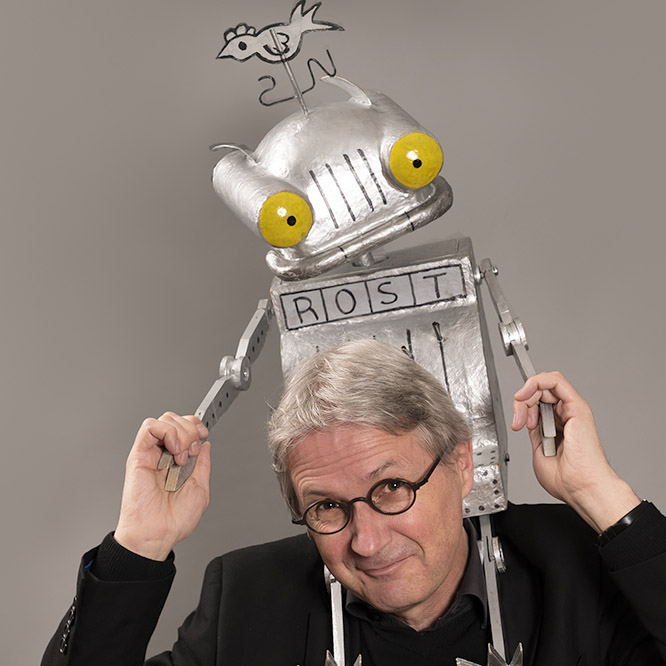Why do I write children’s books?


Is that what I do? Or is it that I simply write the books that I like to write, and it just so happens that they appeal to children? I think it’s like that, because instead of giving in to the pressure of this world to fit in, to be cool and be successful, I try to offer a contrast through my own reality, be it fanciful and probably naive as it may. My world is open-minded, playful, unintentional and aimless. You can be a philosopher or a Dadaist. All the sadness in my stories is as real and heartfelt as the joy. Have I ever wanted to write books specifically for adults? Not really, because that would just be pretending.

Even in his early years, Jörg Hilbert, born in 1965, was interested in music as well as drawing. Originally intending to study the guitar, he altered his decision after completing secondary school to pursue a career in drawing. In 1986, after meeting Paul Flora, whom he held in high regards, Hilbert was convinced of his decision and went on to study Graphic Design at the University GH Essen from 1987 to 1992. During this time, his drawings were published in magazines and newspapers, in addition to being shown in numerable exhibits in galleries throughout Germany and Austria. After he received his degree, he worked for several years as a free-lancer in Graphic Design.
In 1988, Hilbert published his first book of Music Cartoons, but in fact, it was a children’s book that would be his ultimate goal. In 1994, after seven long years of lying in a drawer and being turned down by every well-known children’s book publishing house, the first book of the series which would follow was published: Knight Rusty (Ritter Rost), a children’s musical in book form (music by Felix Janosa). The stories quickly became popular, although they were published by a small, relatively unknown publisher. Many books followed, then audio dramas, and finally, plays.
Today, Knight Rusty musicals are favored in German-speaking countries, showing over 500 performances a year. There is a variety of versions of the play, ranging from those for school plays to puppet theater to professional ensembles. In 2012, the renowned publishing house CARLSEN acquired the trademark and in the early part of 2013, a cinema film was released, followed by a TV series, making Knight Rusty a central and integral part of the German-speaking children’s media world. In 2014 and after 150.000 sold copies, the first book was decorated with the German Gold Award. Since mid-2019, Knight Rosty appears in the Annette Betz publishing company.
Besides The Rusty Knight, Hilbert has written and illustrated numerous other books. Together with Björn Lengwenus, he developed the prize-winning Fritz & Chesster (Fritz & Fertig), a series aimed at teaching chess. More than once has the software version reached the number one place on the US charts. Now, Hilbert’s works have surpassed the 2 million mark in circulation.
Hilbert is counted among the all-time favorite children’s book authors in German-speaking countries. His many works include musicals, composition, lyrics, poetry, novels, picture books, and software. Some specific works have been translated into over thirty languages.


